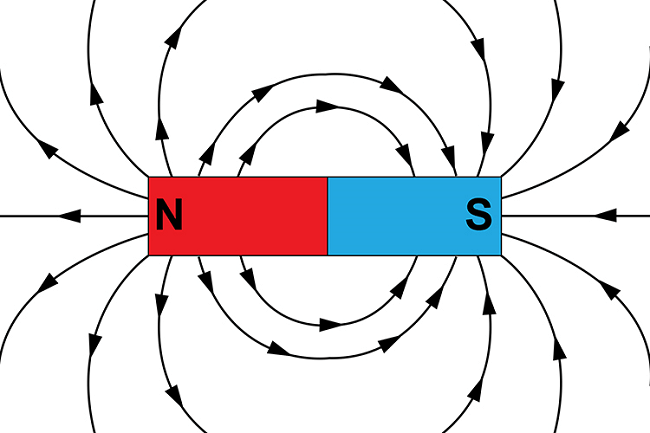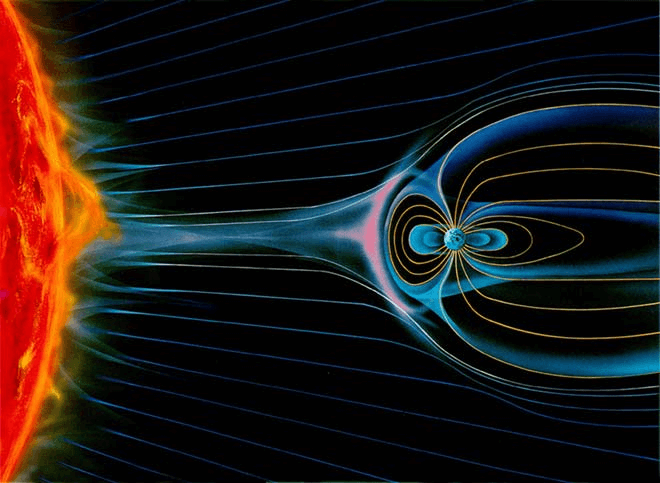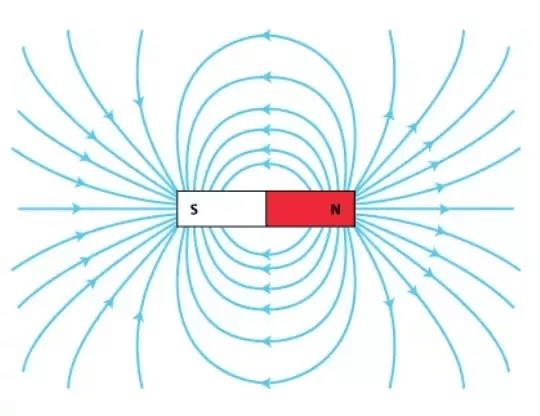Magnetic Field DefinitionA magnet, an electric current, or a charging electric field are all surrounded by a magnetic field, a vector field. In this region, magnetic forces can be observed. The basic particle's moving electric charges, magnetic moments, and the fundamental quantum property known as spin combine to form this field. 
Additionally, the electric and magnetic fields are related to one another. In other words, they belong to the electromagnetic force, one of the four fundamental forces of nature. This post will examine the definition, background, examples, characteristics, and more. This will improve your comprehension of the subject. Introduction to the Magnetic FieldThe magnetic force acts on a magnetic material or a moving electric charge in the magnetic field. Its symbol is either B or H. The base unit is (Newton Second)/Coulomb, and the unit is Telsa. Magnetic Field's Earlier History
French scholar Petrus Peregrinus de Maricourt used iron needles to create a representation of the magnetic field on the surface of a spherical magnet in 1269, which marked the beginning of the study of the magnetic field. He saw that the resulting field lines crossed at two different locations. So he referred to these spots as "poles." Then, he said that no matter how thinly one slice of a magnet is, it will always have a North and South pole. Over three centuries later, William Gilbert argued that the earth acts as a magnet. Magnetic poles are believed to attract and repel one another by English priest and philosopher John Mitchell in 1750. The earth's magnetic field was then verified by Charles-Augustin de Coulomb through tests in 1785. After then, in 1824, a French mathematician and geometer named Simeon Denis Poisson developed the first model of this country. The preconceived assumptions were improved upon and tested as the 19th Century came into use. As Hans Christian Orsted observed in 1819, an electric current generates a magnetic field everywhere around it. After that, in 1825, André-Marie Ampère put up a theory of magnetism in which he claimed that magnetic force was caused by loops of current that were always flowing rather than by dipoles of magnetic charge. After that, in 1831, Faraday proved how a fluctuating magnetic field generates an electric field; in doing so, he discovered electromagnetic induction. In 1861 and 1865, James Clerk Maxwell also published Maxwell's equation, a theory on electricity and magnetism. An Example of a Magnetic Field
A magnetic field vector or magnetic field lines can represent this field. The magnetic field may be represented mathematically as a vector field. A grid-based collection of several vectors is called a vector field. Each of these vectors has a length that is influenced by the strength of the magnetic field and points in the same general direction as a compass. Field lines can also represent the information inside a magnetic vector field. There are no actual lines in a magnetic field. They serve to display magnetic fields visually. Magnetic Field Lines' CharacteristicsThere is no interference between magnetic field lines. Always creating closed loops. Additionally, they consistently start or emerge from the north pole and come to an end at the south pole. Last but not least, the density of the field lines indicates the field's strength. How a Magnetic Field BeganWhen a charge is moving, the magnetic field is created. To initiate a transition and produce a useful magnetic field. Set a change in motion and create a functional magnetic field; there are two main approaches to do so:
According to Ampere, a magnetic field is created whenever an electrical charge is in motion. Take a wire, for example; the current flows when you connect it to a battery. This will help you comprehend it better. The magnetic field will rise according to the current flowing through the conductor. The magnetic field will decrease with distance as you go farther from the wire. We refer to this as Ampere's Law. According to this rule, the equation B=μ0I2πr Here, μ0 represents a unique constant that we refer to as the permeability of open space. μ0=4π×10−7T⋅m/A. Higher permeability materials also can concentrate magnetic fields.
The operation of permanent magnets is based on the movement of electrons around the nucleus. Observation reveals that only specific materials can be transformed into magnets. A few conditions must be met to reach this state. The first is that a material must have atoms with one or more unpaired electrons with the same rotation to be magnetic. Since iron possesses four electrons, it may be used to create magnets. Second, a general desired orientation must be established since the material must be stable enough at ambient temperature. A ferromagnet, also known as a permanent magnet, may exist if we establish it permanently. Last but not least, some materials develop a high enough degree of organization to become magnetic in a magnetic field outside of them. All electron spins are aligned when the external field is present, but this alignment disappears when the external field is removed. These materials fall under the category of paramagnetic materials. FAQQuestion 1: Give two details about a magnetic field. Answer 1: The first of the two characteristics is that these field lines never cross one another. Second, the density of the field lines indicates the field's intensity. Question 2: Are there magnetic fields in space? Answer 2: Undoubtedly, it does. The Milky Way spiral arms are believed to contain a relatively large-scale organized magnetic field based on studies of many pulsars and the polarization of their radio waves. Furthermore, magnetic fields can be seen in interstellar dust clouds. The fields become more pronounced when these clouds disintegrate.
Next TopicMenstrual Cycle Definition
|
 For Videos Join Our Youtube Channel: Join Now
For Videos Join Our Youtube Channel: Join Now
Feedback
- Send your Feedback to [email protected]
Help Others, Please Share










